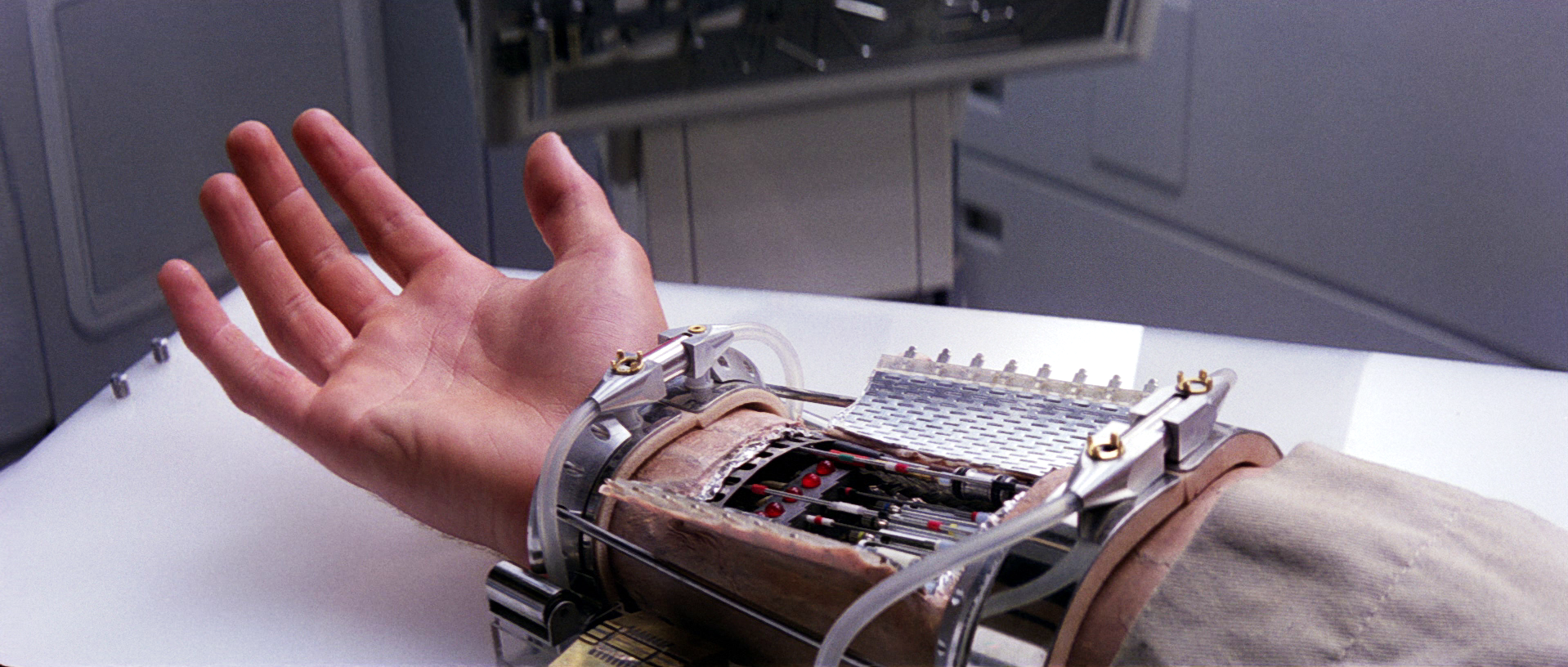
THE POTENTIAL OF CYBERNETICS
byJoris Strončikas
byJoris Strončikas
(academic expressions - *expression*)
My subject of the research is Cybernetics
and I’m going to analyze my
subtopic: its potential.
*In this summary, I put forward the claim that* the areas of Cybernetics that I’m
going to analyze
are Biohacking
and Body modification.
·
What is
Cybernetics?
(According to Wikipedia)
*The data appears to suggest that*
Cybernetics is a transdisciplinary (transdisciplinarity connotes a research strategy that crosses many disciplinary boundaries
to create a holistic approach) approach
for exploring regulatory systems—their structures,
constraints, and possibilities. Norbert Wiener defined cybernetics in 1948 as
"the scientific study of control and communication in the animal and the
machine."
In the 21st century, the term is often used in a
rather loose way to imply "control of any system using technology."
In other words, it is the scientific study of how humans, animals and machines
control and communicate with each other.
·
What is the purpose of
cybernetics?
(According to Wikipedia)
Studies in cybernetics provide a means for
examining the design and function of
any system, including social systems such as business management and
organizational learning, including for the purpose of making them more efficient and effective. But through the
following decades the species known as humans will turn into cyborgs – half human,
half machine. People will modify their bodies to interact with the environment
using radio frequencies, magnetic fields, and even thoughts. Cyborgs
(A cyborg (short for "cybernetic organism") is a being with both organic and biomechatronic body parts.) are the future.
·
What are Grinders? (Biohacking)
(According to Wikipedia)
*Current research appears to validate the view that* Grinders are people who
apply the hacker
ethic to improve their own bodies with do-it-yourself cybernetic devices.
Many grinders identify with the biopunk
(biopunk is a subgenre of science fiction that
focuses on biotechnology) movement,
open-source transhumanism, and techno-progressivism. The
Grinder movement is strongly associated with the body modification movement
and practices actual implantation of cybernetic devices in organic bodies as a
method of working towards transhumanism, such as designing and installing
do-it-yourself body-enhancements such as magnetic implants. Biohacking
emerged in a growing trend of non-institutional science and technology
development.
·
Where is Body
Modification going nowadays?
(*This study draws
on research conducted by* Andre
Infante‘s article: Biohacking: The creepy but exiting trend in body modification)
*This study is an attempt to address the issue of* physically incapable/
traumatized people.
The future is here –
and, while it’s often rough around the edges, anyone with two cents worth of
vision to rub together can see that near future is going to be tumultuous and
wonderful and strange beyond measure. That’s the philosophy that drives
biohacking – fulfilling the promises of science fiction a little at a time, as
the future slowly becomes more evenly distributed. Right now, it’s expensive,
painful, and sketchy enough that it’s pretty much reserved for enthusiasts, DIYers and other people who are not
entirely sane. The tech is getting better, though, and sooner or later it’s
going to move into the mainstream in the same way that tattoos and piercings
have. Your grandmother may someday be showing off the implants
that remind her where she is and monitor her health to call for help if
something goes wrong. Your aunt might have robotic eyes that can see
things that human eyes never could. When you’re old, maybe you’ll opt for
enhanced legs and a porcine heart. At this point in time, it’s a question
of ‘when’, and not ‘if.’
In conclusion, Biohacking and Body
modifications are potential for making
life easier for the youth of the future. Cybernetics is a big leap in
engineering and in human society.